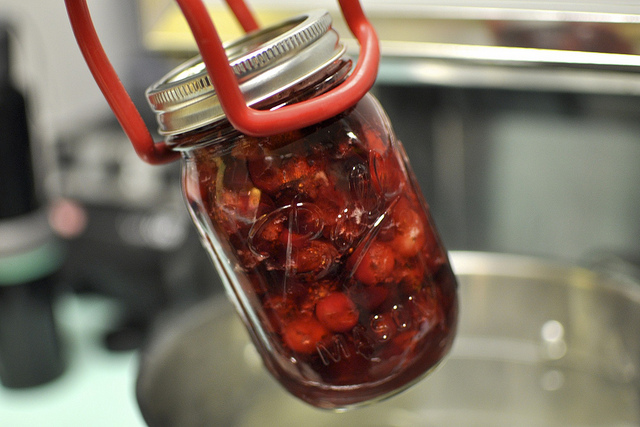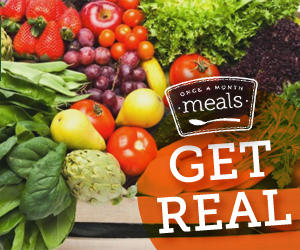**This post is part of the Get Real series. Please remember that this is meant as a learning community. We know that many of you are passionate about what you do and we want you to express that, just please do so in a way that will be an encouragement and aid to others making a transition. We want this to be a “safe space” for participants to learn. For that reason, we reserve the right to delete any comments that are not handled in this manner.
There are a whole lot of choices to make when you first start preserving your own food. Ball jars or Weck? Low sugar pectin or regular? And do you can in boiling water bath canning or invest in a pressure canner?
Boiling water bath canners are good for jams, jellies, pickles, tomatoes, and other high acid foods. They can be constructed out of any deep, sturdy stockpot that is tall enough to accommodate a rack, the jars, and still have a bit of space at the top of the pot for the water to boil.
However, if you want to venture into the lower acid varieties of food, a pressure canner is the name of the game. It allows you to can things like meats, beans, vegetables, and all other foods that have a pH of 4.6 or above. Pressure canning does require some equipment, namely a pressure canner (Unfortunately, standard pressure cookers cannot be swapped in here. You need a pot that has either a weighted or dial gauge). These days, they are quite inexpensive and very much worth the investment. The one I have cost all of $80 and has paid for itself several times over in the two years I have owned it.  The reason that pressure canners allow you to safely can low acid foods is that it has the ability to reach temperatures of between 240 and 250 degrees F. Botulism spores are killed at 235 degrees F, so elevating the temperature above that point allows you to kill those spores and eliminate the chance of having them develop into an active botulism toxin.
The reason that pressure canners allow you to safely can low acid foods is that it has the ability to reach temperatures of between 240 and 250 degrees F. Botulism spores are killed at 235 degrees F, so elevating the temperature above that point allows you to kill those spores and eliminate the chance of having them develop into an active botulism toxin.
Some very safety-conscious canners sometimes think that if pressure canning is good for the low acid stuff, why not use it on the high acid foods as well, just to be safe. The reason it’s still good to keep the boiling water bath canner in your preservation arsenal is that it’s a gentler technique. Because some foods, like the vegetables that are so often pickled, are quite fragile, they don’t hold up well to the intense heat of a pressure canner. Reserving the pressure canning for sturdy, low acid foods will give you the best results overall.
If you’re interested in trying your hand at some pressure canning, you can find more information about the process over at my blog. I have two well-documented pressure canning posts, one on canning ham stock (and the lessons there apply to any stock you care to make) and another about canning chunks of pumpkin. For even more information, make sure to visit the National Center for Home Food Preservation. They are an incredibly useful resource.
August Week Three Action Item:
Each week we will try to give you some simple action steps to put this journey into practice. It is important that you start this journey by understanding yourself, your goals, and perhaps your obstacles.
1. Have you ever done pressure canning? Do you have a preference in canning style and/or stay away from one method or another?
August Get Real:
Please take a moment to thank our guest authors by clicking over to their sites and/or liking them on Facebook and/or Twitter.
Sponsor: Once A Month Meals